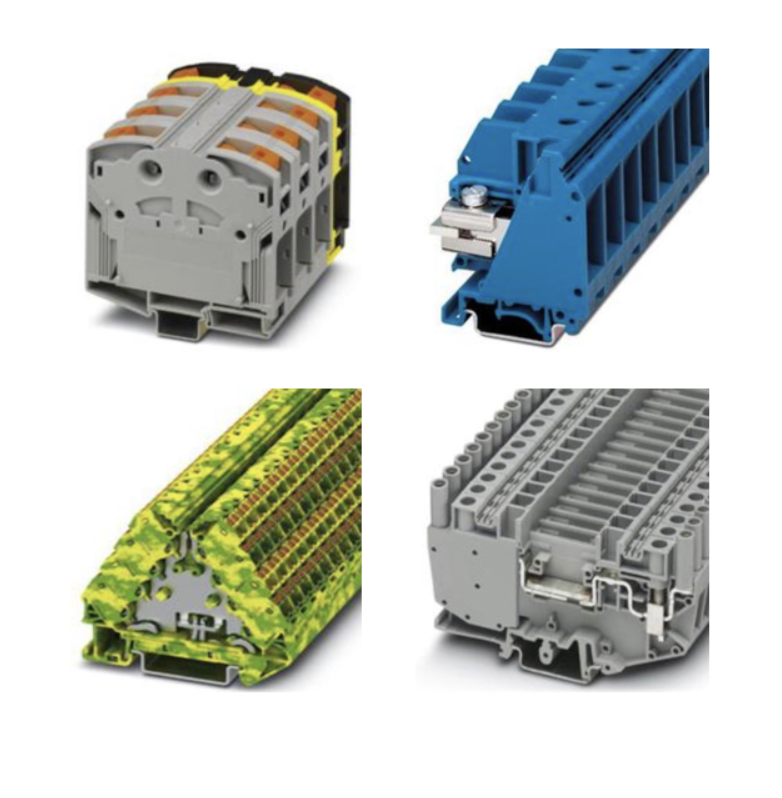Terminal Blocks

Terminal blocks are essential components used to safely and efficiently connect electrical conductors in control panels, industrial automation systems, and power distribution applications. By providing a secure termination point for field wiring, terminal blocks help organize complex wiring layouts while reducing the risk of loose connections, signal loss, or electrical faults. Their modular design supports clean, serviceable installations in control cabinets and junction boxes.
Available in multiple connection technologies, including screw, spring clamp, and push-in. terminal blocks can be selected to match installation preferences and application requirements. Screw terminal blocks offer a traditional, robust connection method, while spring and push-in styles support faster wiring with consistent contact pressure. Terminal blocks are designed to accommodate a wide range of wire sizes and conductor cross-sections, supporting both low-voltage signal wiring and high-current power applications. Terminal blocks are commonly mounted on DIN rails or fixed to mounting plates, allowing flexible configuration and easy expansion. While PCB terminal blocks and terminal block connectors are used to interface directly with circuit boards, traditional terminal blocks remain critical for field wiring and panel-level connections. RSP Supply carries terminal blocks from trusted manufacturers including Eaton, IDEC, Phoenix Contact, Schneider Electric, and Weidmüller to support reliable performance across industrial systems.
FAQs
Q: What are terminal blocks used for?
Terminal blocks are used to connect, organize, and manage electrical wires in control panels, automation systems, and power distribution equipment.
Q: What types of terminal block connection technologies are available?
Common connection types include screw clamp, spring clamp, and push-in terminal blocks, each offering different installation and performance benefits.
Q: Are terminal blocks suitable for high-current applications?
Yes, many terminal blocks are designed to handle high-current and power distribution applications, depending on their rating and construction.
Q: How are terminal blocks mounted?
Terminal blocks are typically mounted on DIN rails or secured to mounting plates inside control panels and junction boxes.
Q: Which manufacturers of terminal blocks does RSP Supply offer?
RSP Supply offers terminal blocks from trusted manufacturers including Eaton, IDEC, Phoenix Contact, Schneider Electric, and Weidmüller.
Why Buy Terminal Blocks from RSP Supply
RSP Supply offers a comprehensive selection of terminal blocks designed for secure, organized, and reliable wire connections in industrial systems. Our product lineup from leading manufacturers supports efficient panel design, long-term performance, and dependable operation across automation and distribution applications.

